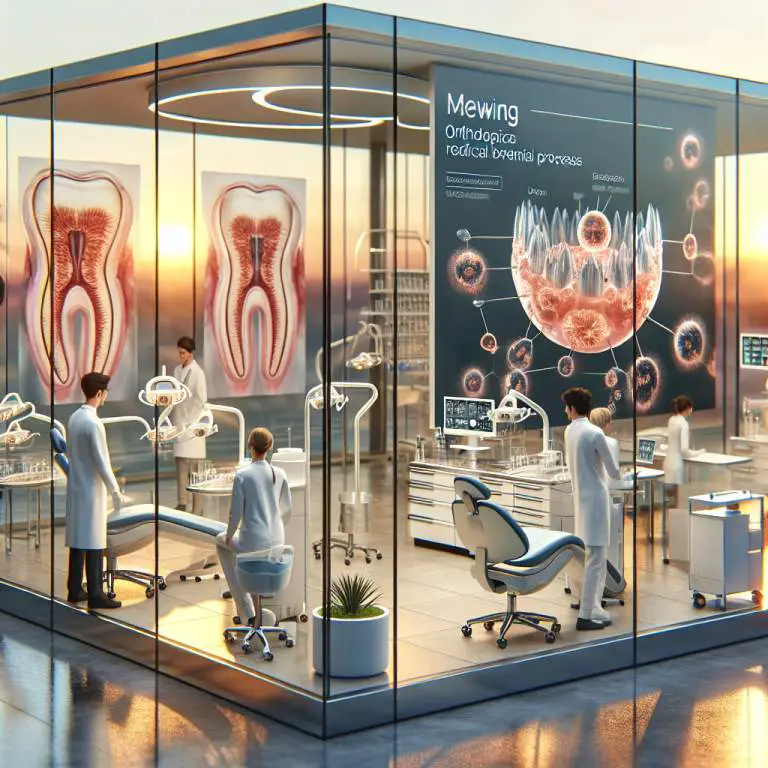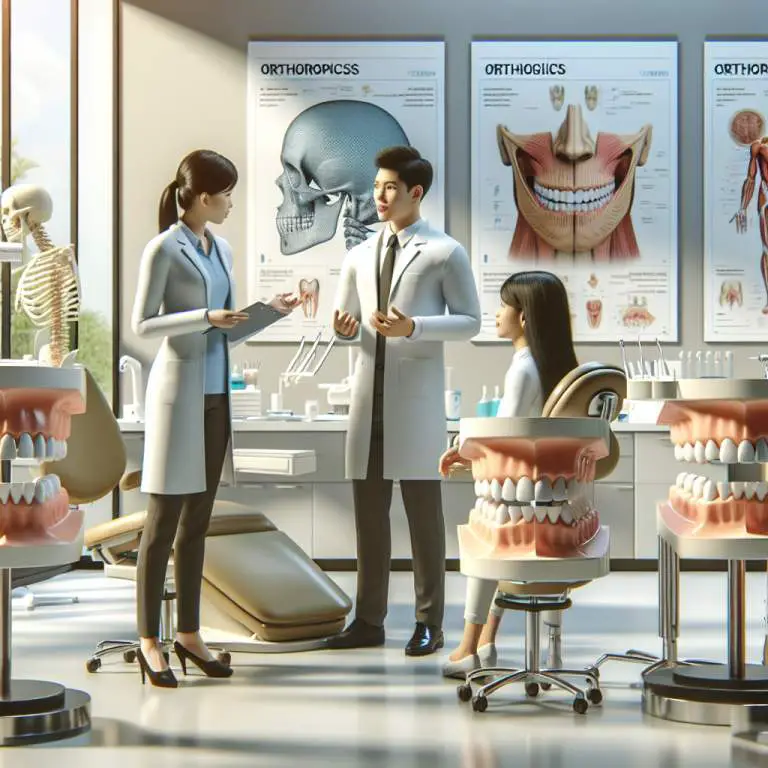What scientific principles support mewing?
Mewing, a technique that involves proper tongue posture to potentially reshape the jawline and improve facial structure, is supported by principles of bone remodeling and muscle adaptation. The idea is that consistent pressure from the tongue against the palate can stimulate changes in the jawbone over time, a concept rooted in orthodontics known as Wolff’s Law. Additionally, strengthening and repositioning the tongue and facial muscles through mewing may lead to improved breathing patterns and posture, aligning with principles of physical therapy.

How Does Mewing Affect the Structure of the Jaw?
Mewing is a technique that involves placing your tongue against the roof of your mouth. This position is supposed to help shape the jawline and improve facial structure over time. People who practice mewing believe it can make their jaw stronger and more defined.
The idea is that by keeping your tongue in this specific position, you’re applying gentle pressure on the jawbone. This pressure might encourage the bones to grow in a certain way. It’s like telling your jaw, “Hey, let’s move this way,” without using words but with actions instead.
What Are the Scientific Theories Behind Facial Bone Remodeling?
Facial bone remodeling is a fancy term for how our face changes shape as we grow or even when we’re adults. Scientists think that our bones can change based on how we use our muscles and what pressures are applied to them. For example, if you chew a lot of gum, some theories suggest your jaw might get wider because it’s working harder.
Another theory talks about something called “osteoblasts” and “osteoclasts.” These are types of cells that build up and break down bone material. When you’re mewing, you might be helping these cells work in a way that reshapes your jawline. It’s kind of like construction workers building a house; some are putting bricks up while others take them down to make everything look nice.
Can Mewing Influence Dental Health and Alignment?
Mewing isn’t just about looking good; it might also affect your teeth. Keeping your tongue pressed against the roof of your mouth could help keep your teeth in line. Think of it as a natural brace that helps guide where your teeth sit in your mouth.
However, it’s not all about straightening things out. Mewing could also impact how well you breathe through your nose or even reduce snoring at night! By training yourself to keep your mouth closed and breathe through your nose, you’re also helping keep those pearly whites healthy by reducing dry mouth and potential cavities caused by mouth breathing.
| Aspect | Explanation | Scientific Basis |
|---|---|---|
| Muscle Tone Improvement | Mewing involves maintaining a proper tongue posture against the roof of the mouth, which can strengthen the tongue and other orofacial muscles. | Increased muscle tone in the orofacial region can lead to improved swallowing mechanism and potentially better support for facial structures. |
| Nasal Breathing Promotion | Proper tongue posture encourages breathing through the nose rather than the mouth, which is healthier and improves oxygen intake. | Nasal breathing filters and warms air, reduces snoring, and improves sleep quality. It also plays a role in maintaining proper oral hygiene by reducing dry mouth. |
| Dental Health | The practice of mewing may help align the teeth naturally over time due to the constant pressure exerted by the tongue on the palate. | Orthodontic literature suggests that gentle, consistent pressure on teeth can influence their positioning over time, similar to how braces work. |
| Facial Structure Changes | Mewing proponents claim that it can lead to more defined jawlines and cheekbones over time. | While long-term studies are scarce, changes in muscle tone around the jaw and cheeks could potentially influence facial aesthetics. However, significant bone structure changes in adults remain controversial among experts. |
| Breathing and Posture Improvement | Maintaining correct tongue posture may also encourage better overall posture and improve breathing efficiency. | Adequate head and neck alignment can reduce strain on muscles and improve respiratory function. This is supported by physiotherapy research linking posture with improved lung capacity. |
Is There Any Scientific Evidence Supporting the Benefits of Mewing?
When it comes to mewing, people often ask if there’s real science behind it. The truth is, scientific studies on mewing specifically are limited. Most of the evidence comes from personal stories and observations.
However, some related research talks about orthotropics. This is a broader field that looks at how facial structure can change with different habits. But remember, this isn’t exactly the same as mewing.
How Do Age and Genetics Play a Role in Mewing Results?
Age and genetics are big factors when we talk about changing our jawline with mewing. Younger people might see more changes because their bones are still growing. It’s like their body is more ready to adapt.
Genetics also play a role in how your face looks and changes. Some people might find it easier to see results because of their genetic makeup. But this doesn’t mean others can’t see improvements; it might just take longer or look different.
What Are the Potential Risks or Downsides of Incorrect Mewing Techniques?
If you don’t do mewing right, there could be some risks. One problem could be putting too much pressure on your teeth or jaw in the wrong way. This might lead to pain or even change how your teeth fit together.
Another risk is getting too focused on mewing and forgetting about other important things for your health, like eating well or staying active. Remember, balance is key in everything we do for our health.
Final Thoughts
Mewing has become popular online with many people saying it works wonders for them. But it’s important to remember that everyone’s body reacts differently to these kinds of practices.
If you’re thinking about trying mewing, keep in mind the importance of doing it correctly and being patient with results. And always consider talking to a professional if you’re unsure about something related to your health.







